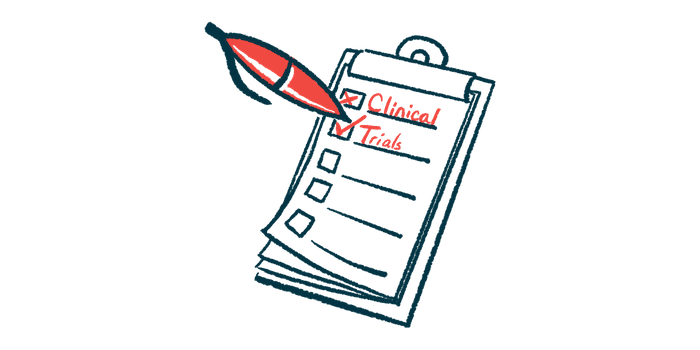Telitacicept eases Sjögren’s disease activity in Phase 3 trial
Investigational therapy also led to reduction in patient-reported symptoms
Written by |

The investigational therapy telitacicept leads to significant and clinically meaningful reductions in disease activity and patient-reported symptoms among adults with primary Sjögren’s disease, according to new data from a Phase 3 clinical trial conducted in China.
The findings — consistent with Phase 2 trial data — were reported by telitacicept’s original developer, Remegen, ahead of a planned presentation at the American College of Rheumatology Convergence 2025 meeting, to be held Oct. 28 in Chicago.
Remegen is developing telitacicept in China, but sold the therapy’s development and commercial rights elsewhere to Vor Bio.
“With today’s Phase 3 results in primary Sjögren’s disease, we are thrilled to announce that telitacicept is demonstrating disease-modifying potential in a condition that has long lacked any approved treatment,” Jean-Paul Kress, MD, chairman and CEO for Vor Bio, said in a company press release. “We believe these are clear data which can help pave a path towards a brighter future for this deserving community.”
Telitacicept is currently under review by Chinese regulators for the treatment of Sjögren’s. Vor, meanwhile, is planning for a global Phase 3 trial, which U.S. regulators have already cleared.
“We are evaluating the timing of a global Phase 3 clinical study in primary Sjögren’s disease, which represents a significant opportunity to expand into and bring telitacicept’s benefits to patients worldwide,” Kress said.
Telitacicept designed to block two critical signaling molecules
In Sjögren’s, the immune system mistakenly produces self-reactive antibodies that attack the body’s moisture-producing glands and other tissues. The disease is classified as primary when it is not associated with another underlying condition.
There are no approved disease-modifying therapies for Sjögren’s, and available treatment focuses on symptom management. In many cases, patients still experience “years of fatigue, pain, and [body-wide] complications,” said Ronald van Vollenhoven, MD, PhD, a professor at Amsterdam University Medical Center in the Netherlands.
B-cells are a type of immune cell that produces not only the antibodies that naturally help the body fight infections, but also the self-reactive antibodies that wrongly target the body’s own healthy tissues.
Telitacicept is designed to block BLyS and APRIL, two signaling molecules that are critical for B-cell maturation and survival. This is expected to reduce the number of mature B-cells, in turn lowering production of the self-reactive antibodies that drive Sjögren’s symptoms.
While it doesn’t hold any U.S. approvals, telitacicept is already marketed in China for the treatment of the autoimmune diseases lupus, rheumatoid arthritis, and myasthenia gravis.
Therapy significantly reduced measure of disease severity
The China-based Phase 3 clinical trial (NCT05673993) involved 381 adults with active primary Sjögren’s who were positive for anti-SSA antibodies, a type of self-reactive antibody commonly found in Sjögren’s.
Participants received weekly under-the-skin injections of telitacicept (80 mg or 160 mg) or a placebo on top of standard therapy for 48 weeks, or nearly a year. After the first 24 weeks, or about six months, participants in the placebo group who had an inadequate treatment response could be switched to telitacicept.
The study’s main goal was to assess changes in scores on the European League Against Rheumatism’s (EULAR) Sjögren’s syndrome disease activity index (ESSDAI), a standard measure of disease activity, after 24 weeks.
Remegen previously reported that telitacicept was generally safe and had significantly reduced ESSDAI scores, reflecting less severe disease relative to the placebo, meeting the study’s main goal.
The companies have now announced more detailed trial results. After six months, ESSDAI scores dropped by a mean of 4.4 points with high-dose telitacicept and by 3 points with the lower dose, compared with a 0.6-point reduction with the placebo. The results were similar after 48 weeks.
The study also met all of its secondary goals. Specifically, a significantly greater proportion of people in the high-dose group (71.8%) and the low-dose group (47.1%) achieved a clinically meaningful 3-point reduction in ESSDAI scores compared with the placebo group (19.3%) after 24 weeks.
The consistency of benefit through 48 weeks, together with a reassuring safety profile, supports telitacicept’s potential to become the first treatment that addresses the root biology of Sjögren’s disease rather than managing symptoms alone.
About half of the participants on high-dose telitacicept and 28.8% of those given the low dose were considered to have low disease activity, as reflected by an ESSDAI score below five, after 24 weeks. That’s compared with 10.9% of those on the placebo.
Scores on the EULAR Sjögren’s Syndrome Patient Reported Index (ESSPRI), a patient-reported measure of symptom severity, were also significantly reduced with telitacicept relative to the placebo.
After 24 weeks, clinically meaningful ESSPRI score drops were reported by 86.2% of people on 160 mg telitacicept, 63% of those on the 80 mg dose, and 32.2% of those in the placebo group.
Participants treated with high-dose telitacicept also showed statistically significant and clinically meaningful reductions in fatigue relative to the other two groups after 24 weeks. All of the benefits observed at 24 weeks were sustained at 48 weeks.
“I am impressed how these data show that … telitacicept could offer a clear impact on both disease activity and patient-reported outcomes,” van Vollenhoven said.
Telitacicept was well tolerated, with most adverse events being mild to moderate in severity. There were no reports of new safety concerns.
“The consistency of benefit through 48 weeks, together with a reassuring safety profile, supports telitacicept’s potential to become the first treatment that addresses the root biology of Sjögren’s disease rather than managing symptoms alone,” Kress said.






